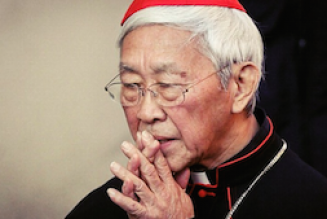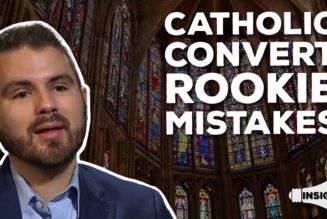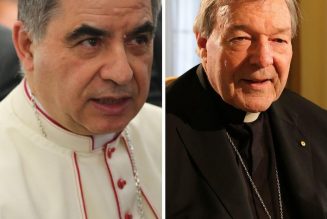By Phil Lawler ( bio – articles – email ) | Aug 17, 2023
Earlier this week, an internet search took me to the web site of the Diocese of Albany, New York, where I happened upon an official profile of retired Bishop Howard Hubbard. The profile is formulaic, listing his various pastoral assignments and committee memberships. Still it is interesting for the facts it does not mention:
- that Bishop Hubbard is the target of several sex-abuse lawsuits;
- That last year Bishop Hubbard asked the Vatican to release him from the clerical state; and
- That this year, after the Vatican turned down his bid for laicization, he announced that he was getting married.
The bishop’s “marriage” is invalid, of course; a cleric is not free to marry. (Even if he had been laicized, the 84-year-old bishop would have needed a dispensation to marry.) So I would not have expected the archdiocese to post a cheerful wedding announcement. Still I was struck by the absence of any reference to the bishop’s recent behavior. My journalistic sense tells me that people might be interested to know about a bishop who:
- no longer wants to act as a bishop, or even as a priest;
- wants to marry, even at an advanced age; and
- is undaunted by the fact that he will be “marrying” outside the Church.
There’s a story there, don’t you think? Perhaps, understandably, the Albany diocese does not want to tell the story. But then why leave the biography posted on the web site, without even a hint at the unhappy ending of the bishop’s ministry? Well, it’s summer time, and people are on vacation, and maybe that part of the site has not been updated recently. That too would be understandable.
But then I asked myself: What should the archdiocese do in such a case? Simply eliminate the bishop’s biography, as if he had never existed? That is, I’m afraid, the way Catholic (arch)dioceses have typically handled the cases of priests who deserted their ministry; their names simply disappeared from the diocesan directories. But the disappearance of a diocesan bishop—in this case, one who led the Albany archdiocese of 37 years—is not so easy to arrange.
(Curious, I checked the web site of the Washington archdiocese, and found that a terse but accurate statement about the former archbishop, Theodore McCarrick. Well done.)
In nearly 40 years on the beat, I have seen enormous changes in Catholic journalism. But I have seen very little change in the tendency of the “official” Catholic media—the outlets controlled by hierarchical authority—to avoid unpleasant truths. Even after two decades of scandal, the first instinct of in-house editors is not to explain the bad news, or even to downplay the bad news—which would again be understandable responses, and in some cases entirely appropriate—but to ignore the bad news.
In their efforts to cover up unpleasantness, the chancery spokesmen can often count on the silence of the secular media, whose editors are usually not interested in Catholic affairs. If the bad news involved a departure from Catholic teaching, they could also count on the acquiescence of progressive Catholic outlets, who would welcome the novelties. But the sex-abuse scandal has broken down that conspiracy of silence.
Two other developments in the field have had an important effect. First came the appearance of Catholic publications that were completely independent of hierarchical financial support, such as Crisis magazine and Catholic World Report (both of which I was privileged to serve as editor, years ago). Next came the development of the internet, which made possible the rise of independent Catholic news services and aggregators (in the English-speaking world, Catholic World News came first), and a plethora of web sites and blogs featuring Catholic commentary.
The media landscape has changed dramatically. The approach of the “official” Catholic media outlets has not. There is still that numbing tendency to ignore the unpleasant.
The rise of independent Catholic outlets has brought an exponential increase in the amount of information available to Catholics who want to be informed about developments in our Church. Unfortunately, the resulting competition for the attention of readers has also produced a tendency toward sensationalism—toward “click-bait” headlines and a delight in exposing the worst of every scandal. Somehow we need to strike a new balance: between the instinct to cover up problems and the prurient interest in every detail of the latest scandals, the latest rumors, the latest gossip and speculation. A balance between the tendency to cover up unpleasant news, and the tendency to focus obsessively on the negative. In short a willingness to search for the truth, confident that the truth is on our side.
Sound Off! CatholicCulture.org supporters weigh in.
All comments are moderated. To lighten our editing burden, only current donors are allowed to Sound Off. If you are a current donor, log in to see the comment form; otherwise please support our work, and Sound Off!

There are no comments yet for this item.









